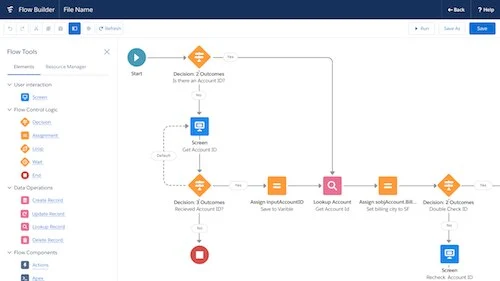In today’s fast-paced digital landscape, automating business processes has become a key strategy for staying competitive. Salesforce, a leading CRM platform, continues to evolve to meet these demands. In this article, we’ll explore how you can leverage Salesforce’s latest innovation, Salesforce Reactive Components, to automate and enhance your screen flows. Buckle up as we embark on a journey to revolutionize your Salesforce experience.
Introduction: Embracing Automation with Salesforce
Salesforce is a powerhouse when it comes to customer relationship management, but its capabilities extend far beyond that. With the introduction of Reactive Components, Salesforce is empowering businesses to take automation to the next level.
What are Reactive Components?
Reactive Components are dynamic elements that respond to user actions in real-time. Unlike traditional static components, these can adapt and change based on user input, providing a more engaging and personalized experience.
The Power of Automation
Automation has the potential to streamline processes, reduce errors, and free up valuable human resources. With Reactive Components, you can automate tasks within your Salesforce screen flows, making your workflows more efficient than ever before.
Getting Started with Reactive Components
Now that we’ve piqued your interest, let’s dive into how you can get started with Reactive Components.
Setting up Reactive Components
- Access the Lightning App Builder: To begin using Reactive Components, open the Lightning App Builder in your Salesforce org.
- Drag and Drop: Simply drag and drop the Reactive Component onto your screen flow canvas.
- Configure Properties: Customize the properties of the Reactive Component to match your requirements.
Real-time Interaction
With Salesforce Reactive Components in place, your screen flows become interactive in real-time. Users will appreciate the dynamic nature of your application, and you’ll witness a significant boost in engagement.
Use Cases for Reactive Components
The versatility of Reactive Components opens the door to a wide range of use cases. Let’s explore a few scenarios where they can make a difference.
1. Customer Onboarding
Automate the customer onboarding process by using Reactive Components to guide new users through each step. Provide a personalized experience based on their inputs and preferences.
2. Lead Qualification
Efficiently qualify leads by creating dynamic forms that adapt to the information provided by potential customers. Reactive Components can help you gather the right data effortlessly.
3. Service Ticket Resolution
Enhance your customer support by using Reactive Components to guide agents through the resolution process. The dynamic interface will ensure nothing gets overlooked.
Benefits of Using Reactive Components
It’s essential to understand the advantages that Reactive Components bring to the table.
1. Improved User Experience
Reactive Components create a user-friendly and engaging interface, resulting in higher user satisfaction and productivity.
2. Enhanced Efficiency
Automation reduces manual tasks and accelerates processes, saving time and resources.
3. Real-time Insights
With real-time user interaction, you gain valuable insights into user behavior and preferences.
Conclusion: Transforming Your Salesforce Experience
Reactive Components are a game changer in Salesforce automation. By integrating these dynamic elements into your screen flows, you can provide a more personalized, efficient, and engaging experience for your users. Embrace the future of automation with Salesforce and stay ahead of the competition.
FAQs (Frequently Asked Questions)
1. What are Reactive Components in Salesforce?
Reactive Components are dynamic elements that respond to user actions in real-time, enhancing user engagement and automation in Salesforce.
2. How can I get started with Reactive Components?
To start using Reactive Components, access the Lightning App Builder in your Salesforce org, drag and drop the component onto your canvas, and configure its properties.
3. What are some common use cases for Reactive Components?
Reactive Components can be used for customer onboarding, lead qualification, service ticket resolution, and many other scenarios where real-time interaction is valuable.
4. What benefits do Reactive Components offer?
Reactive Components improve user experience, enhance efficiency, and provide real-time insights into user behavior.
5. How can I stay competitive with Salesforce automation?
By leveraging Reactive Components, you can automate and enhance your processes, providing a competitive edge in today’s digital landscape.




